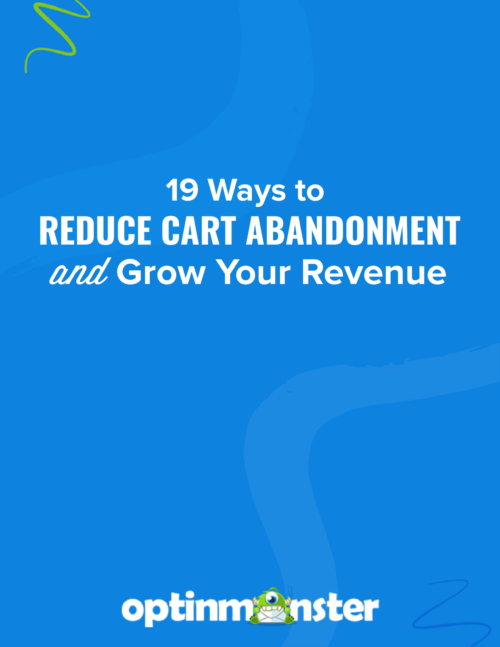TL;DR:
Blogging is still thriving in 2025, with over 600 million blogs worldwide and more than 7.5 million posts published daily. The average post takes about 4 hours to write and runs 1,416 words, yet readers only spend 52 seconds on it. Despite the competition, blogs remain a powerful tool — businesses that blog see 2x more email traffic, marketers who prioritize blogging are 13x more likely to get positive ROI, and 71% of B2B buyers rely on blog content during their journey.
If you want to start a blog that makes money, it’s important to be in the loop with the latest trends so that you’re not missing out on any opportunities to increase your traffic or revenue.
Let’s dive right in!
Ultimate List of Blogging Statistics and Facts
We hope these blogging stats give you some insight and help you make healthy decisions for your blog’s future.
General Blogging Statistics
- 7.5 million blog posts are published every day.
- More than 409 million people view over 20 billion pages each month on WordPress.com.
- On average, it takes about 4 hours to write a blog post.
- The average reader spends 52 seconds reading a blog post.
- There are approximately 600 million blogs in the world in 2023.
- The average blog post length is 1,416 words in 2023.
- Only 14% of bloggers write blog content that’s 2,000+ words in length.
- 44% of bloggers publish new content between three to six times monthly.
- 65% of content marketers say they have a documented content strategy.
- 71% of B2B buyers consume blog content during their buyer journey.
- A blog increases your chances of ranking higher in search by 434%.
- 61% of Americans spend 3X more time-consuming blog content than emails.
- Blog posts with 6-13 word long headlines tend to drive more traffic.
- Odd-numbered headlines perform better than their even-numbered counterparts.
Blogging SEO Stats
- Only 38% of bloggers are updating older articles.
- 34% of bloggers say that updating content produces strong results.
- Around 5% of bloggers don’t have access to analytics.
- Titles with 6-13 words attract the highest and most consistent amount of traffic.
- SEO leads have a 14.6% close rate, while outbound leads (such as direct mail or print advertising) have a 1.7% close rate.
- 72% of online marketers describe content creation as their most effective SEO tactic.
Want more SEO statistics? We got you covered.
Blogging Traffic Stats
- Businesses that blog experience twice as much email traffic as businesses who don’t.
- Having a hyphen or colon in the headline increased click-through rates by 9%.
- Making your headline 6-8 words can increase your CTR by 21%.
- Over 50% of bloggers report that it has gotten harder to get traffic from Facebook over the past two years, and nearly one-fifth say it has gotten harder to get traffic from Google.
- Over the past year, there’s been a 93% increase in blogs using promotional techniques to drive traffic to their post including paid ads.
Guest Blogging Statistics
- 60% of blogs write 1-5 guest posts per month.
- 3% of blogs write over 100 guest posts per month.
- Only 6% of bloggers publish the majority of their original content as guest posts.
- 62.96% of readers perceive blogs with multiple authors to be more credible.
- 79% of editors say guest content is too promotional.
- Guest content is in higher demand in the summer months of June, July, and August.
Travel Blogging Statistics
- 59% of travel bloggers run more than one travel blog.
- Over 80% of travel planning is done through the internet and is growing.
- 33% of US travelers use travel blogs for travel advice.
- The majority of travel blogs are between 1-4 years old.
- Most travel blogs use publication and sponsored posts as one of the main income sources.
- The average travel blogger will charge an average of $200 per sponsored post.
- 94% of travel blogs sell advertising.
- Most travel blog’s traffic mainly stems from non-brand search with direct traffic a distant second.
Blogging Growth Stats
- The number of bloggers in the USA is expected to grow to 31.7 million in 2020.
- There are more than 500 million blogs that exist in 2019.
- Tumblr has more than 440 million blogs.
- WordPress has about 60 million blogs.
- Blogging has grown by 12% since 2015.
- At this moment, there are roughly 1.9 billion web pages. Judging by the growth rate, we will be hitting 2 billion in less than a year.
- The average blog post is 1151 words, that’s a 42% increase in the last 5 years.
Social Media Blogging Statistics
- 66% of marketers reported using blogs in their social media content in 2017.
- 59% of people will share an article without reading it first, or ever.
- LinkedIn is the most effective social media platform for delivering content and securing audience engagement.
- 95.9% of bloggers promote their blog posts via social media.
- Tumblr had 456.1 million blog accounts as of January 2019.
- 69% of bloggers say they use social share buttons.
Blogging With Visuals and Videos Stats
- Articles with images get 94% more views as opposed to those with no visuals.
- 71% of bloggers report using visuals as part of their marketing strategy.
- Using photos of real people instead of stock photos can result in a 35% conversion increase.
- 43% of consumers increasingly want video content from marketers.
- 19% of bloggers are now including video in their typical posts.
- 45% of bloggers who add audio to their posts such as podcast see better results.
- Video content is 50 times more likely to drive organic search traffic than plain text.
- 32% of marketers say visual images are the most important form of content for their businesses.
Blogging Statistics for Marketers
- Marketers who prioritize blogging are 13x more likely to have a positive ROI on their efforts.
- 61% of the most effective B2B content marketers meet with their content team daily or weekly.
- 64% of B2B marketers outsource blog copywriting.
- Spending on marketing automation tools is expected to reach $25.1 billion annually by 2023.
- 60% of marketers have a documented personalization strategy.
- 57% of marketers say they’ve gained customers specifically through blogging.
- 53% of marketers say blogging is their top content marketing priority.
- B2B marketers who have blogs get 67% more leads than those who don’t.
- Around 60% of marketer will reuse blog content 2-3 times.
- 60% of B2B marketers struggle with creating engaging content.
How To Ensure Your Blog Stays Relevant
The blogging industry has become extremely saturated. Ever since the first bloggers shared their success stories publicly, more and more people are getting into the industry.
As a result, competition has gotten higher, and surviving as a blog these days has become increasingly difficult. If you’re not putting in the effort, you’re more than likely going to fail.
But there’s one very important thing you can do that most thriving blogs are doing today. That’s to create “evergreen content”, which is essentially content that doesn’t have an expiry date. People can look back at it in years from now and still find it useful.
It’s also common for bloggers to revisit old content and update the information to provide a fresh take on the subject. Bloggers have stated that content that gets touched up like this is an excellent way to boost SEO.
Related Content13 Best Blog Sites: Which Is Right For You?
Blogging Predictions
So, now that you know this information, what do you do with it?
It’s difficult to know the answer to that unless we first look at where blogging is going, and if it’s still worth putting time and energy into your blogging efforts.
Like Bitcoin, we could be seeing blogging’s peak at the moment, and one day we could wake up to a huge crash.
But as the blogging statistics show, it doesn’t seem like it’s going anywhere anytime soon. It’s still totally relevant in 2025 and is steadily rising.
It might be hard to determine exactly how many blogs there are out there at any given moment. The blog marketing stats say about 600 million, although that number also includes inactive sites, which may affect the accuracy of the statistic.
Also, not all platforms choose to share their data publicly.
And although it may be hard to accurately gauge how many blogs there are, one thing’s for sure: At this rate, we will be celebrating 1 billion blogs in no time!
Let’s see what the future holds.
Frequently Asked Questions
1. How many blogs are there in 2025?
There are over 600 million blogs worldwide, with more than 7.5 million posts published daily.
2. Is blogging still worth it in 2025?
Yes. Businesses that blog generate 2x more email traffic, and marketers who prioritize blogging are 13x more likely to achieve positive ROI. Blogging remains a reliable channel for lead generation and brand growth.
3. How long does it take to write a blog post?
On average, it takes about 4 hours to write a blog post, and the typical length is around 1,416 words.
4. How long do readers spend on a blog post?
The average reader spends only 52 seconds on a blog post, which means strong headlines, scannable formatting, and visuals are key to holding attention.
5. What type of blog content performs best?
Blog posts with 6–13 word headlines, odd numbers in titles, and strong visuals (images or videos) consistently outperform plain-text posts. Adding video makes content 50x more likely to drive organic search traffic.
6. Do B2B buyers still read blogs?
Yes — 71% of B2B buyers read blog content during their journey, making blogs a critical part of the decision-making process.
Sources (aka, “Everything We Went Through so You Didn’t Have To!” ? )
HubSpot | SEO Tribunal | TopRank | Content Marketing Institute | IsItWP | Jeff Bullas | Marketing Experiments | Social Media Examiner | Statista | Travel Memo | Professional Travel Bloggers Association | Referral Rock | SEJ | Junto | Orbit Media | Impact | Tech Client | ConversionXL | WordPress | Neil Patel | Red Website Design | Growth Badger | Hosting Tribunal | Tech Jury












Add a Comment